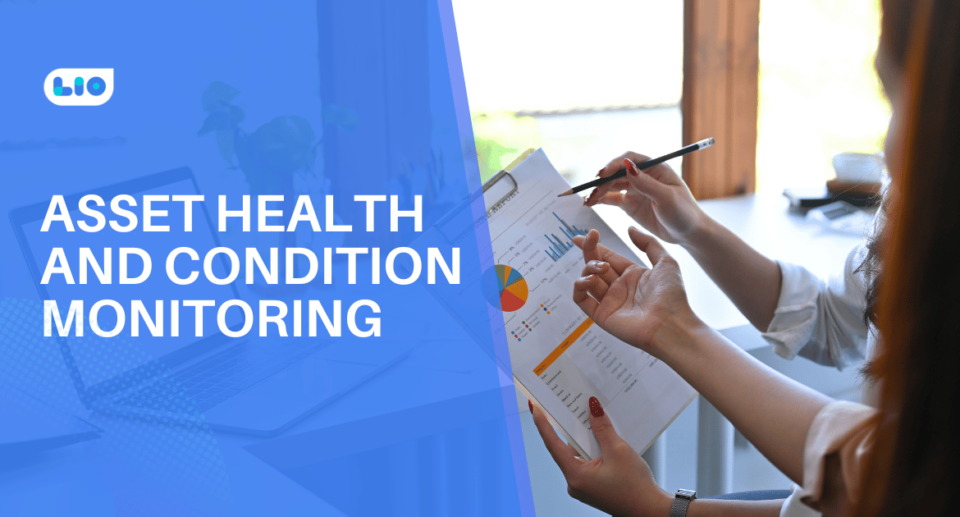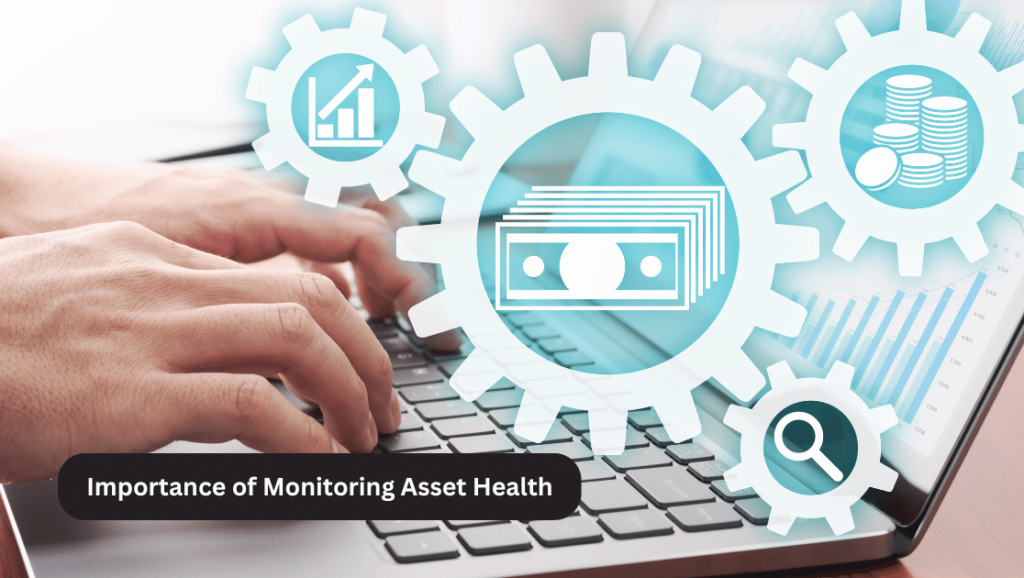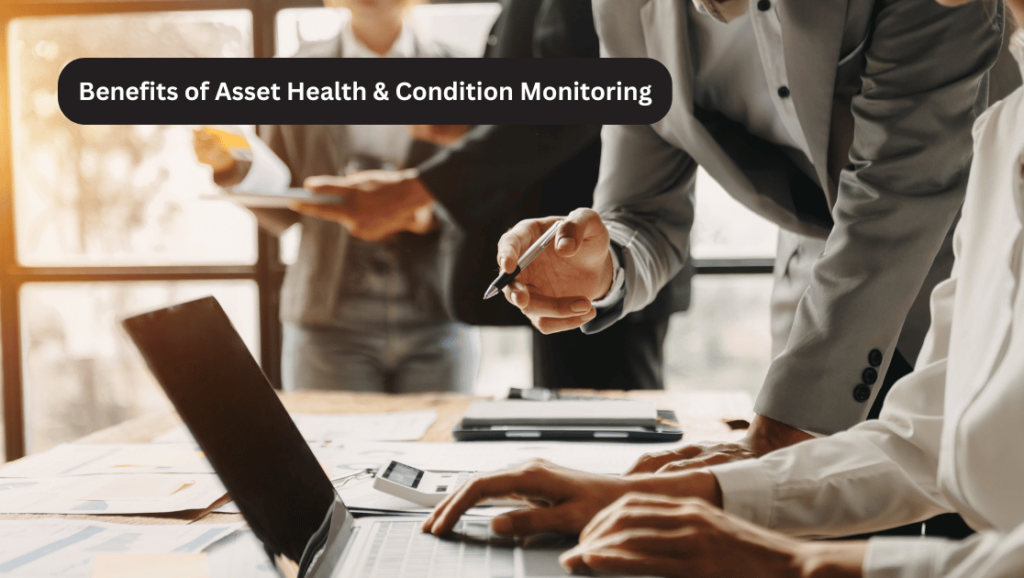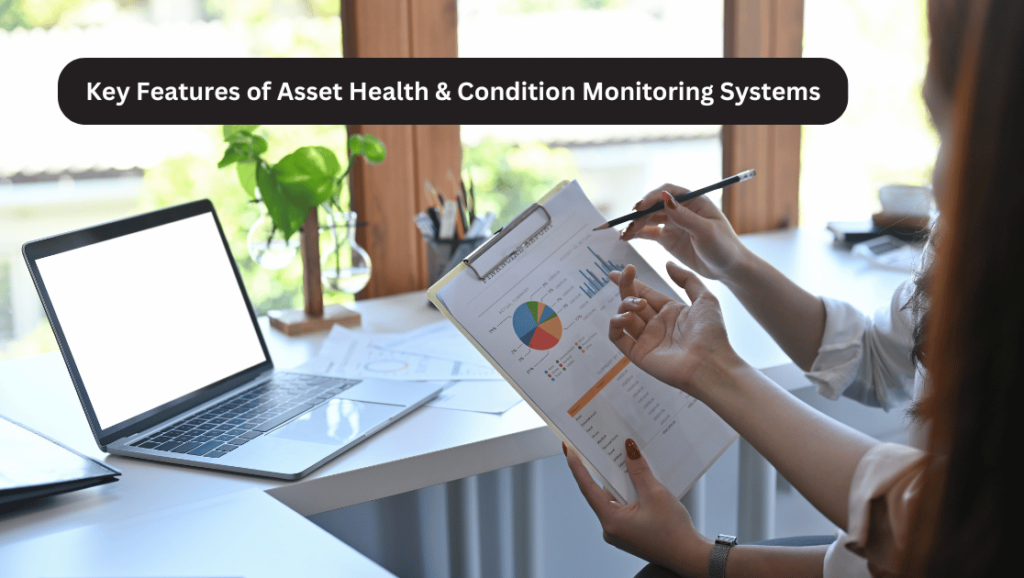Asset Health & Condition Monitoring
Gaurav Singh Rawat
- April 9, 2025
- 9 Min Read

In today’s fast-paced industrial landscape, the efficiency and reliability of assets are paramount to the success of any organization.
Asset health monitoring has emerged as a crucial practice that enables companies to optimize their asset performance, minimize downtime, and reduce maintenance costs.
By leveraging advanced technologies and data-driven insights, asset health monitoring provides a proactive approach to asset management, ensuring that equipment operates at peak performance and potential issues are identified before they lead to costly failures.
What is Asset Health Monitoring?
Asset health monitoring is the process of continuously assessing the condition and performance of physical assets, such as machinery, equipment, and infrastructure, to detect anomalies, predict potential failures, and optimize maintenance strategies.
It involves the collection and analysis of real-time data from various sources, including sensors, control systems, and historical maintenance records, to gain a comprehensive understanding of an asset’s health.
The primary goal of asset health monitoring is to shift from reactive maintenance to a proactive and predictive approach. By monitoring key performance indicators (KPIs) and identifying deviations from normal operating conditions, organizations can schedule maintenance activities based on the actual condition of the asset rather than relying on fixed time intervals.
This enables companies to extend the lifespan of their assets, reduce unplanned downtime, and optimize resource allocation.

Transform Asset Management
Revolutionize your asset management strategy with our advanced condition monitoring tools. Make data-driven decisions for improved ROI. Get in touch today!
Importance of Monitoring Asset Health
Asset health monitoring plays a vital role in ensuring the smooth operation of industrial facilities and maximizing the return on investment in physical assets. Here are some key reasons why monitoring asset health is crucial:

Increased Equipment Reliability
By continuously monitoring the health of assets, organizations can identify potential issues early on and take corrective actions before they escalate into major failures.
This proactive approach significantly improves equipment reliability, reducing unplanned downtime and minimizing the impact on production schedules.
Optimized Maintenance Strategies
Asset health monitoring enables organizations to transition from time-based maintenance to condition-based maintenance.
By analyzing real-time data and historical trends, maintenance teams can prioritize their activities based on the actual condition of the assets, focusing on the most critical issues and optimizing resource allocation. This targeted approach reduces unnecessary maintenance costs and improves overall operational efficiency.
Enhanced Safety and Compliance
Monitoring asset health helps organizations ensure the safety of their employees and comply with regulatory requirements. By detecting anomalies and potential hazards, companies can take proactive measures to mitigate risks and prevent accidents.
Asset health monitoring also enables organizations to maintain accurate records of maintenance activities, facilitating compliance with industry standards and regulations.

Maximize Asset Uptime with CM
Implement condition monitoring to detect potential failures early, reduce downtime, and extend the life of your critical assets. Get started today!
Improved Asset Lifecycle Management
Asset health monitoring provides valuable insights into the performance and degradation patterns of assets over their entire lifecycle. By analyzing historical data and predicting future trends, organizations can make informed decisions regarding asset replacement, upgrades, and investments.
This data-driven approach optimizes asset lifecycle management, maximizing the value extracted from each asset and minimizing total cost of ownership.
Increased Operational Efficiency
Asset health monitoring streamlines maintenance processes and reduces unplanned downtime, leading to improved operational efficiency. By identifying and addressing potential issues proactively, organizations can minimize disruptions to production schedules, optimize resource utilization, and enhance overall productivity.
Asset health monitoring also enables better coordination between maintenance and production teams, ensuring seamless operations and minimizing conflicts.
Benefits of Asset Health & Condition Monitoring
Implementing an effective asset health & condition monitoring strategy offers a wide range of benefits for organizations across industries. Here are some of the key advantages:

Increased Asset Reliability and Availability
By continuously monitoring the health of assets, organizations can identify potential issues early on and take corrective actions before they escalate into major failures.
This proactive approach significantly improves asset reliability, reducing unplanned downtime and minimizing the impact on production schedules.
Reduced Maintenance Costs
Asset health & condition monitoring enables organizations to transition from time-based maintenance to condition-based maintenance.
By analyzing real-time data and historical trends, maintenance teams can prioritize their activities based on the actual condition of the assets, focusing on the most critical issues and optimizing resource allocation. This targeted approach reduces unnecessary maintenance costs and improves overall operational efficiency.
Enhanced Safety and Compliance
Monitoring asset health helps organizations ensure the safety of their employees and comply with regulatory requirements. By detecting anomalies and potential hazards, companies can take proactive measures to mitigate risks and prevent accidents.
Asset health & condition monitoring also enables organizations to maintain accurate records of maintenance activities, facilitating compliance with industry standards and regulations.

Predict & Prevent Failures
Harness the power of predictive maintenance through asset health monitoring. Identify issues before they lead to costly breakdowns. Explore our solutions.
Improved Asset Lifecycle Management
Asset health & condition monitoring provides valuable insights into the performance and degradation patterns of assets over their entire lifecycle. By analyzing historical data and predicting future trends, organizations can make informed decisions regarding asset replacement, upgrades, and investments.
This data-driven approach optimizes asset lifecycle management, maximizing the value extracted from each asset and minimizing total cost of ownership.
Increased Operational Efficiency
Asset health & condition monitoring streamlines maintenance processes and reduces unplanned downtime, leading to improved operational efficiency. By identifying and addressing potential issues proactively, organizations can minimize disruptions to production schedules, optimize resource utilization, and enhance overall productivity.
Asset health & condition monitoring also enables better coordination between maintenance and production teams, ensuring seamless operations and minimizing conflicts.
Key Features of Asset Health & Condition Monitoring Systems
To effectively implement asset health & condition monitoring, organizations need robust systems that incorporate the following key features:

Real-Time Data Collection
Asset health & condition monitoring systems should be capable of collecting real-time data from various sources, including sensors, control systems, and IoT devices. This data provides a comprehensive view of asset performance and enables timely decision-making.
Advanced Analytics and Predictive Capabilities
Leveraging advanced analytics and machine learning algorithms, asset health & condition monitoring systems can analyze historical data, identify patterns, and predict potential failures. These predictive capabilities enable organizations to take proactive measures and optimize maintenance strategies.
Customizable Dashboards and Visualization Tools
Asset health & condition monitoring systems should offer user-friendly dashboards and visualization tools that provide a clear overview of asset health and performance. These tools enable stakeholders to easily access and interpret data, facilitating informed decision-making and collaboration.
Integration with Maintenance Management Systems
Seamless integration with existing maintenance management systems is crucial for effective asset health & condition monitoring. This integration allows for automated work order generation, resource allocation, and maintenance scheduling based on the insights derived from the monitoring system.
Scalability and Flexibility
As organizations grow and evolve, their asset health & condition monitoring systems should be scalable and flexible to accommodate changing needs. The system should be able to handle increasing volumes of data, support new asset types, and adapt to evolving business requirements.
Conclusion
Asset health monitoring has become an essential practice for organizations seeking to optimize their asset performance, reduce maintenance costs, and improve operational efficiency.
By leveraging advanced technologies and data-driven insights, companies can proactively monitor the condition of their assets, predict potential failures, and make informed maintenance decisions.
Implementing an effective asset health monitoring strategy requires a holistic approach that encompasses data collection, analysis, and integration with existing maintenance processes.
As Industry 4.0 continues to transform the industrial landscape, asset health monitoring will play an increasingly critical role in driving operational excellence and competitive advantage.
By embracing this proactive approach to asset management, organizations can unlock the full potential of their physical assets, minimize downtime, and achieve sustainable growth in an ever-evolving market.
Frequently Asked Questions (FAQs)
What are the latest trends in Asset Health & Condition Monitoring technologies for Industry 4.0?
Asset Health & Condition Monitoring is evolving rapidly with the advent of Industry 4.0. Some of the latest trends include the use of AI and machine learning for predictive maintenance, the integration of IoT sensors for real-time monitoring, and the development of digital twins for virtual asset management.
How can Asset Health & Condition Monitoring help reduce environmental impact and improve sustainability?
By optimizing asset performance and extending asset lifespan, Asset Health & Condition Monitoring can significantly reduce waste and energy consumption. Predictive maintenance enabled by condition monitoring also minimizes the risk of environmental incidents caused by equipment failures.
What are the best practices for implementing Asset Health & Condition Monitoring in a multi-site, global organization?
Implementing Asset Health & Condition Monitoring across multiple sites and geographies requires a standardized approach and centralized data management. Best practices include defining clear roles and responsibilities, establishing consistent monitoring processes and thresholds, and leveraging cloud-based platforms for scalability and accessibility.
How can Asset Health & Condition Monitoring be integrated with existing ERP and CMMS systems?
Integrating Asset Health & Condition Monitoring with ERP and CMMS systems enables a holistic view of asset performance and maintenance workflows. This can be achieved through APIs, data connectors, or middleware solutions that allow seamless data exchange between the systems.
What are the key considerations for selecting sensors and data acquisition systems for Asset Health & Condition Monitoring?
When selecting sensors and data acquisition systems for Asset Health & Condition Monitoring, key considerations include the type of assets being monitored, the critical failure modes, the operating environment, and the required data frequency and accuracy. Other factors to consider are interoperability, scalability, and cost-effectiveness of the solutions.
How can Asset Health & Condition Monitoring be applied to non-traditional assets like infrastructure and facilities?
While Asset Health & Condition Monitoring is commonly associated with industrial equipment, it can also be applied to infrastructure assets like bridges, roads, and buildings, as well as facilities like HVAC systems and electrical networks. The principles of data-driven condition assessment and predictive maintenance are equally relevant in these domains.


